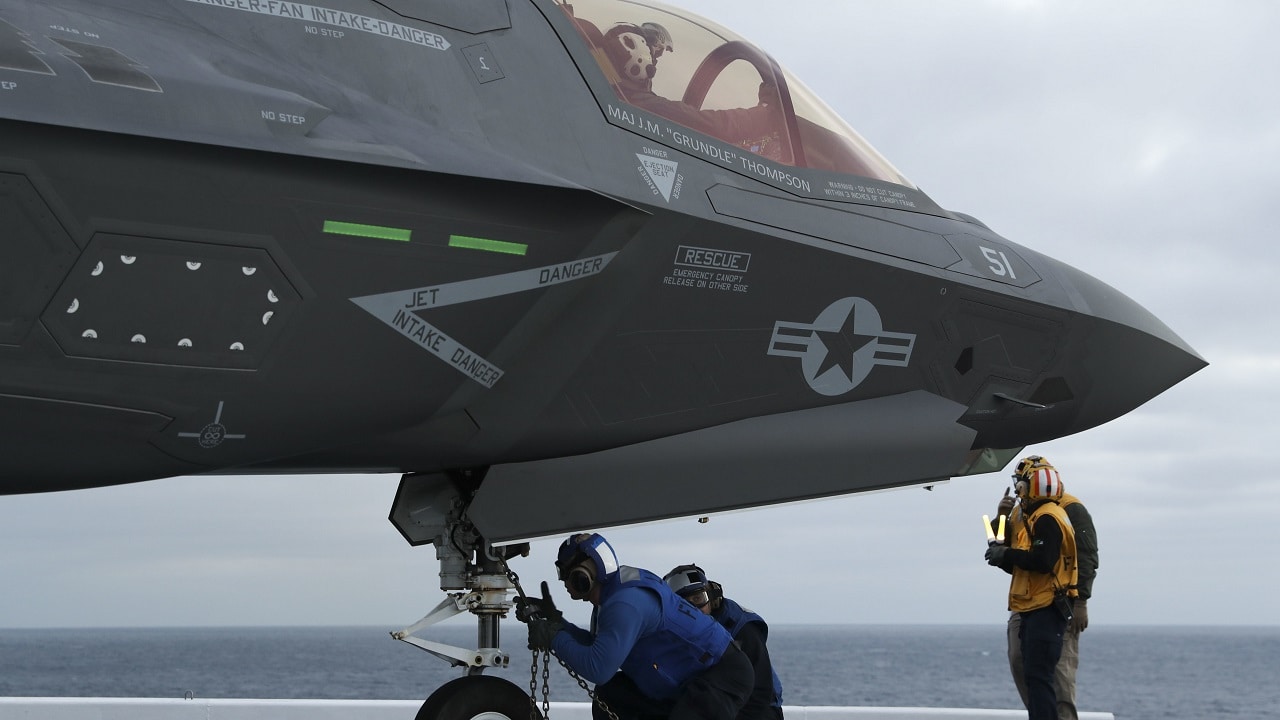As the United States flows forces to Europe following Russia’s invasion of Ukraine, it is important to show that global powers don’t pivot. The U.S. military must focus on more than one challenge at a time—even when they are of varying degrees of immediacy, seriousness, and danger.
Facing a darkening security environment thanks to Ukraine and many flashpoints in Asia, it is past time for the Pentagon to get its bureaucratic house in order and that starts with confronting two facts. First, the Defense Department is not innovating and investing at the speed of its adversaries. Second, the Pentagon and often lawmakers are unwilling to accept short-term risks in exchange for long-term competitiveness.
Former undersecretary of defense for policy Michèle Flournoy told Congress just this week that “some progress has been made in stimulating innovation across the [Defense] Department, just not yet at the pace or magnitude required.” That is true, if understated.
Across a range of emerging and advanced military technologies, defense leaders warn that the United States is behind and risks losing its waning competitive advantages. The former first-ever software officer for the Air Force Nicolas Chaillan resigned last fall, citing the Pentagon’s lack of budgetary support for joint all-domain command and control (JADC2) and silos that stymie the US military’s ability to act with agility to “enable the delivery of timely capabilities at the pace of relevance.” Chaillan added that such silos, “allow senior officials to satisfy their thirst for power.”
In a subsequent interview, Chaillan concluded “we have no competing fighting chance against China in 15 to 20 years. Right now, it’s already a done deal; it is already over in my opinion.” The head of the Pentagon’s Joint Artificial Intelligence Center Lt. Gen. Michael Groen pushed back, arguing that in some regards the military’s use of artificial intelligence tools in particular still outpaces adversaries. Yet, Groen also acknowledged the worrisome pace of innovation and acquisition saying, “inside the department, there is a cultural change that has to occur.”
Pentagon hypersonic weapons development programs are also behind those of China and Russia. In January, U.S. Space Force Gen. David Thompson emphasized the Pentagon has “a lot of catching up to do very quickly.”
Simultaneously, China is modernizing its nuclear arsenal, with former vice chairman of the Joint Chiefs of Staff Gen. John Hyten warning, “it’s going to take us 10 to 15 years to modernize 400 [intercontinental ballistic missile] silos that already exist.” However, “China is basically building almost that many overnight.”
Each military service is struggling with variations of the same problem.
In the Navy, the head of Naval Information Forces Vice Adm. Kelly Aeschbach said earlier this month, “I would say that I’m worried we’re not adapting fast enough,” and that her workforce might not be afforded “the chance to be really innovative with capabilities we’ve given them.”
Speaking at the same venue as Aeschbach, Rear Adm. Jeffrey Jablon, head of the U.S. Pacific Fleet’s submarine force agreed, “we are not moving fast enough.” Jablon expanded that he needed to put “[new] technologies on my submarines for the near term, the next two to five years.”
While the Marine Corps has received praise for its efforts to reorganize for strategic competition with China in recent years, the new deputy commandant for combat development and integration Lt. Gen. Karsten Heckl also just sounded the alarm.
“If anybody thinks we are moving fast enough, you’re crazy,” he said at a conference in February.
Secretary of the Air Force Frank Kendall has cautioned that his service “will not succeed against a well-resourced and strategic competitor if we insist on keeping every legacy system we have.” Kendall has clearly expressed his interest in working with Congress to find a path forward.
But he will be dealing with the same Congress that has yet to pass regular appropriations for the federal government almost half a year after the deadline.
The Defense Department moving slowly in the face of fast-changing security developments and warp-speed adversary buildups is no longer excusable.
Gen. Hyten worried that the Pentagon has a culture where risky or new efforts do not move forward unless success is assured. Hyten’s primary solution was to empower servicemembers. “We have to be able to push things down and allow people to take risks – smart risks – again,” he said last fall.
Kendall agreed with this focus, observing, “Our one team cannot win its one fight to deter China or Russia without the resources we need and a willingness to balance risk today to avoid much greater risk in the future.”
The United States and its allies and partners are faced with strategic competitors in multiple theaters. As Russia’s unprovoked invasion of Ukraine violently reorders the security of Europe, America’s military is reminded that it cannot afford to fall further behind or move any slower.
Now a 1945 Contributing Editor, Mackenzie Eaglen is a resident fellow in the Marilyn Ware Center for Security Studies at the American Enterprise Institute. You can follow her on Twitter: @MEaglen.
More about Mackenzie Eaglen: While working at AEI, Ms. Eaglen served as a staff member on the National Defense Strategy Commission, a congressionally mandated bipartisan review group whose final report in November 2018, “Providing for the Common Defense,” included assessments and recommendations for the administration. Earlier, Ms. Eaglen served as a staff member on the 2014 congressionally mandated National Defense Panel, established to assess US defense interests and strategic objectives, and in 2010 on the congressionally mandated bipartisan Quadrennial Defense Review Independent Panel, which evaluated the Pentagon’s defense strategy. She is also one of the 12-member US Army War College Board of Visitors, which offers advice about program objectives and effectiveness.

